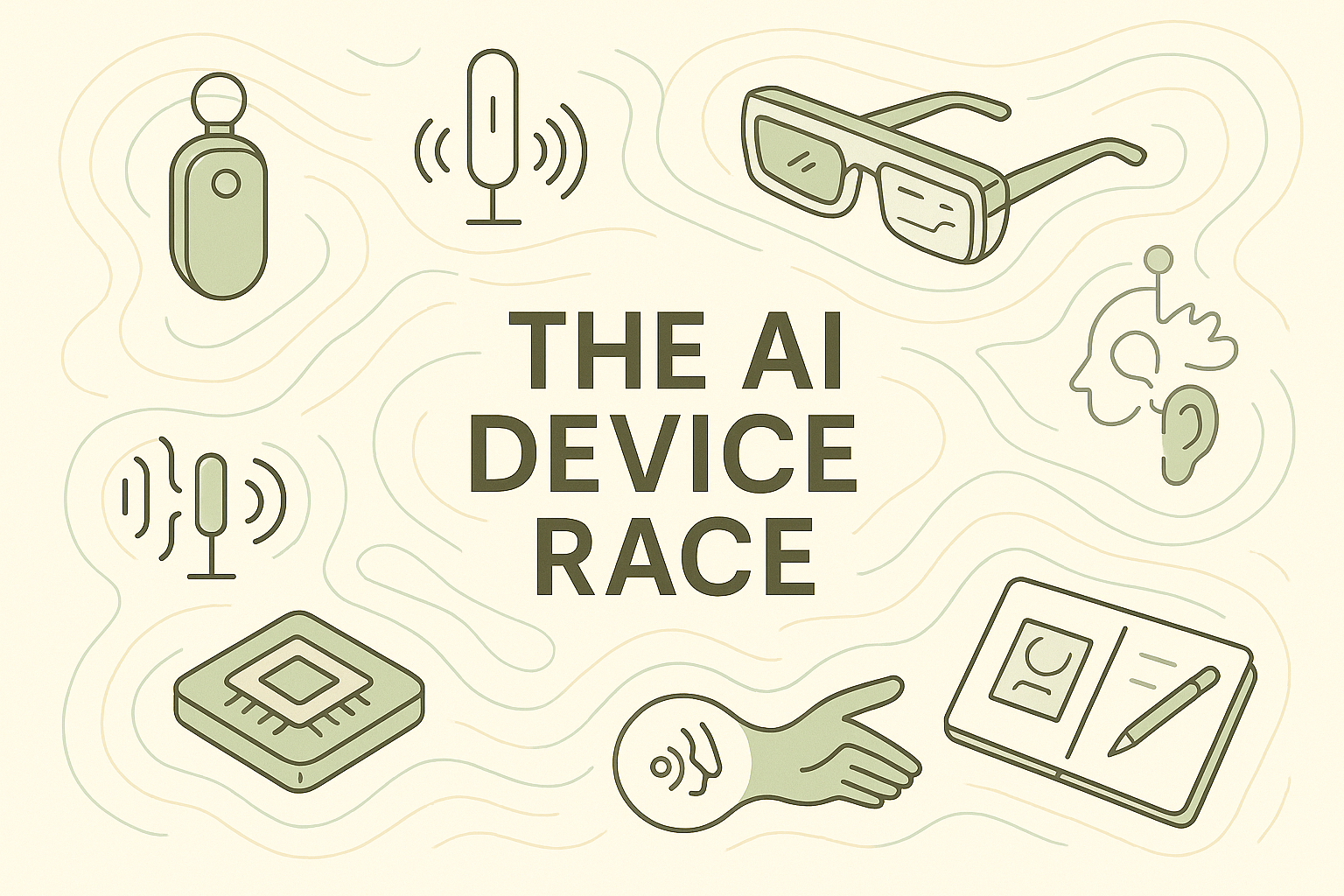The Next AI Interface: OpenAI’s Hardware Bet and the Race to Build AI-Native Devices

The Big Move
In one of the most intriguing moves of the year, OpenAI has quietly acquired a hardware startup called "io" for a reported $6.5 billion. What makes this story so compelling isn’t just the price tag, but the pedigree. Io was founded by Jony Ive, the legendary designer behind Apple’s iPhone, iMac, and Apple Watch. Now, with backing from OpenAI and SoftBank, Ive is leading a moonshot effort to design a new kind of device — one built from the ground up for artificial intelligence.
For OpenAI, the acquisition is a signal that the era of purely software-based AI experiences is ending. The next evolution of generative AI may require entirely new interfaces, and OpenAI wants to own the next paradigm shift — just like Apple did with the smartphone.
The New AI Interface
Today, generative AI lives inside screens: on phones, in browsers, through apps. But what if the future isn’t an app at all? What if it’s a wearable, a voice interface, or a screenless assistant that interacts with you ambiently?
That’s the bet OpenAI is making. Early reports suggest the "io" device could be a minimal, possibly screenless product that prioritizes natural voice interaction. This concept places AI not as a tool you summon, but a presence you live with — proactive, personalized, and ambient.
Other startups are already exploring this territory. Humane’s AI Pin and the Rabbit R1 are early attempts at rethinking how humans interact with machines in a world driven by LLMs. Meta’s Ray-Ban smart glasses are beginning to incorporate on-device AI. These devices aren’t just gadgets; they are probes into what comes after smartphones.
And the form factors are still evolving. Imagine:
- AI-powered earbuds that act as personal assistants
- Smart pendants that listen and respond
- Eyeglasses that interpret your environment in real time
- Pocketable voice-only devices with memory and context
The question isn’t whether this will happen, but who will win the interface.

Public Companies in the Space
While OpenAI is privately held, the hardware arms race it has triggered involves some of the most valuable public companies in the world. Here’s who stands to benefit or compete:
Apple (AAPL)
With Ive’s history at Apple, the comparison is unavoidable. Apple has long been rumored to be working on AI glasses and ambient computing devices. If OpenAI succeeds here, it could force Apple to accelerate its own roadmap or even rethink its AI strategy.
Meta (META)
Meta has been aggressive in pushing smart glasses, and their latest generation already features basic AI-powered interactions. As their Llama models mature, Meta is positioned to be a major player in consumer-grade AI wearables.
NVIDIA (NVDA)
Even if devices are minimal, the AI models that power them need serious compute. NVIDIA will benefit from edge inference and server-side training, particularly if OpenAI’s models remain vertically integrated.
ARM Holdings (ARM)
As low-power AI processing becomes critical, ARM’s chip architecture will likely power many of these new devices. From wearables to ambient nodes, ARM is essential to scaling the AI device economy.
Alphabet (GOOGL)
Google is reworking Android to prioritize on-device AI. With Pixel phones and potential future form factors, Google is angling for an ecosystem-wide AI experience.
Qualcomm (QCOM)
The chipmaker has focused on AI-optimized mobile processors. As device makers shift to AI-first design, Qualcomm’s chips may sit at the core of this transformation.
Amazon (AMZN)
Alexa was the first mainstream ambient AI. While its momentum has stalled, Amazon is still experimenting with voice and home interfaces. OpenAI’s move may force a reboot of Alexa's strategy.
Strategic Framing
Why hardware? Because the interface is power.
Every computing shift has been accompanied by a new interface: the keyboard and mouse for desktops, multitouch for smartphones, voice for smart assistants. AI demands a new interaction model, and the company that defines it will set the rules for the next tech decade.
OpenAI likely sees this not just as a design exercise but as a distribution strategy. If the next dominant interface is built around GPT-like models, OpenAI wants to own that interface end-to-end. This is platform thinking at the highest level.
The stakes are massive. Whoever controls the AI interface controls user data, context, trust, and revenue. This is not just about utility; it’s about being the gatekeeper of intelligence itself.
Investor Takeaway
OpenAI’s acquisition of io is more than a moonshot. It’s a line in the sand.
AI-native devices are coming. Whether they look like glasses, pins, earbuds, or something entirely new, they represent the next big shift in how we interact with technology. Investors should watch the hardware moves of companies like Apple, Meta, NVIDIA, and ARM closely. The AI race isn’t just about better models — it’s about who brings them into our lives.
At NeuralCapital.ai, we’ll be tracking every move.
Disclosure: This article is editorial and not sponsored by any companies mentioned. The views expressed in this article are those of the author and do not necessarily reflect the official policy or position of NeuralCapital.ai.